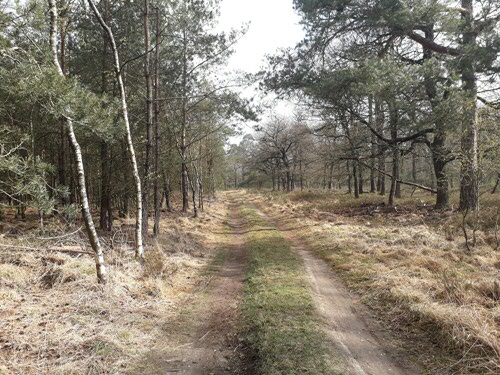Door recreatie minder teken bij paden
Niet alleen de wolf maar ook de mens veroorzaakt een ‘angstlandschap’ in natuurgebieden. Herten mijden bijvoorbeeld paden die gebruikt worden voor recreatie. Dat daardoor de tekendichtheid in de buurt van deze paden maar liefst 72% lager is dan bij paden in rustgebieden waar geen recreatie plaatsvindt, ontdekte RUG-promovendus en ecoloog Bjorn Mols.
Bjorn Mols publiceerde zijn studie in het wetenschappelijk tijdschrift Science of the Total Environment, dat op 3 juni 2022 is verschenen.
Gedrag herten
Mols: ‘We weten dat mensen onbewust, enkel al door hun aanwezigheid, sterke effecten hebben op het gedrag van herten. Eerder toonden we aan dat dit op zijn beurt invloed heeft op landschapsvormende processen zoals bosontwikkeling. In deze nieuwe studie laten we echter zien dat ook andere ecologische interacties hierdoor gewijzigd worden.
Minder teken
We ontdekten dat door het recreatief gebruik van paden er vlakbij – gemeten op 20 meter - deze paden minder herten gezien worden. Hierdoor vermindert het aantal teken vlakbij paden drastisch (met 72%), en dus ook het risico op tekenbeten voor mensen. Dit terwijl door teken overgebrachte ziekten een steeds grotere bedreiging vormen voor de volksgezondheid.’

Modern natuurbeheer
Chris Smit, adjunct hoogleraar aan het Groningen Institute for Evolutionary Life Sciences (GELIFES) van de RUG en mede-auteur licht toe: ‘Onze bevindingen zijn ook relevant voor de nieuwe insteek in natuurbeheer om menselijke activiteiten te gebruiken bij het sturen van ecologische processen.'
Picknickterreinen
'Het is interessant te kijken,' vervolgt Smit, 'hoe onze resultaten kunnen worden toegepast in modern natuurbeheer om de dichtheden van teken - en dus het risico op ziektes voor recreanten - te sturen. We kunnen bijvoorbeeld denken aan het aanleggen van goed gebruikte paden bij bijvoorbeeld picknickterreinen of speeltuinen. Zo kan door een slimme planning van recreatie het risico op teken en hun ziektes gestuurd worden.’
Corona
Infectieziekten lijken een steeds grotere bedreiging te vormen voor de volksgezondheid. Studies naar de effecten van recreatie op ecologische processen, met name in verband met ziekten, zijn tegenwoordig dan ook extra relevant, ook omdat er door de coronamaatregelen een hogere recreatiedruk was op natuurgebieden.
Publicatie
‘Recreation reduces tick density through fine-scale risk effects on deer space-use’ (2022). Auteurs: Bjorn Mols, Joe E. Churchill, Joris P. G. M. Cromsigt, Dries P. J. Kuijper and Christian Smit. In Science of the Total Environment, 156222, 3 juni 2022; https://authors.elsevier.com/a/1fB4FB8cculGk
Meer nieuws
-
19 december 2025
Mariano Méndez ontvangt Argentijnse RAÍCES-prijs
-
18 december 2025
Waarom innoveren, en voor wie?
-
17 december 2025
Ben Feringa wint Feynmanprijs
